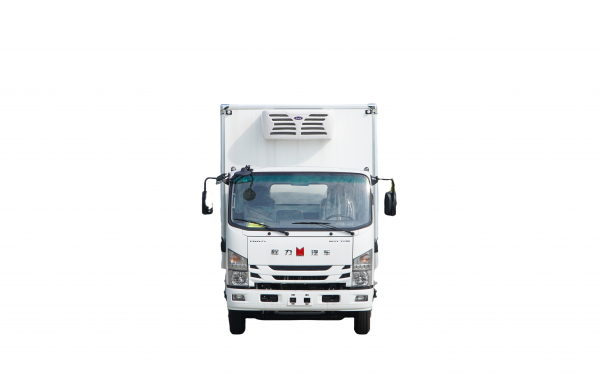Comprehensive Garbage Truck Inspection Checklist Ensuring Safety and Efficiency

Introduction
Garbage trucks play a crucial role in waste management systems, collecting and transporting trash from residential, commercial, and industrial areas to disposal sites. These vehicles are subjected to rigorous use and must be maintained in optimal condition to ensure safety, efficiency, and compliance with regulations. Regular inspections are essential to identify and address potential issues before they escalate into costly repairs or accidents. In this article, we will provide a comprehensive garbage truck inspection checklist to help fleet managers and maintenance personnel ensure the reliability and performance of these critical vehicles.
1. Exterior Inspection
1.1 Body and Frame
- Check for any signs of rust, corrosion, or damage to the body and frame.
- Inspect for loose or missing bolts, brackets, and fasteners.
- Verify that the body is securely attached to the chassis to prevent shifting during operation.
1.2 Lights and Signals
- Test all exterior lights, including headlights, taillights, turn signals, and brake lights.
- Inspect the condition of the lenses and bulbs for cracks or discoloration.
- Ensure that all lights and signals are functioning correctly to maintain visibility and compliance with road safety regulations.
1.3 Mirrors and Windows
- Adjust and clean mirrors for optimal visibility around the vehicle.
- Inspect windows for cracks, chips, or other damage that may obstruct the driver's view.
- Check the functionality of power-operated windows and mirrors for proper operation.
1.4 Tires and Wheels
- Inspect tire tread depth and look for signs of uneven wear or damage.
- Check tire pressure and ensure that it meets the manufacturer's recommendations.
- Verify that wheel nuts are properly tightened and that there are no signs of wheel misalignment.
1.5 Brakes and Suspension
- Test the brake system for responsiveness and effectiveness.
- Inspect brake pads, rotors, and drums for wear and tear.
- Check the suspension system for signs of damage or wear that may affect vehicle stability and handling.
2. https://www.worktruckmaker.com/dongfeng-d9-railway-dust-suppression-truck/
- Inspect the condition of the driver's seat for wear and tear.
- Check the functionality of seat belts and ensure that they are securely anchored.
- Verify that all controls, gauges, and indicators are working properly.
2.2 Cabin and Controls
- Inspect the condition of the cabin interior for cleanliness and organization.
- Check the functionality of HVAC systems for proper heating and cooling.
- Test all controls, including steering, transmission, and auxiliary systems.
2.3 Safety Equipment
- Ensure that the fire extinguisher is present, fully charged, and within its expiration date.
- Verify the functionality of emergency exits, such as doors and windows.
- Check the availability and condition of first aid kits and other safety equipment.
3. Engine and Mechanical Components
3.1 Engine
- Check the engine oil level and condition, topping up or replacing as needed.
- Inspect the air filter for dirt and debris, replacing if necessary.
- Test the battery and charging system for proper voltage and functionality.
3.2 Transmission and Drivetrain
- Check transmission fluid levels and condition, topping up or replacing as needed.
- Inspect drive shafts, universal joints, and differential components for wear and damage.
- Test the functionality of the transmission, including shifting and engagement.
3.3 Cooling and Heating Systems
- Inspect the radiator and coolant levels, topping up or flushing as needed.
- Check the functionality of the heating system for proper operation.
- Test the cooling fan and thermostat for proper function.
3.4 Exhaust and Emissions
- Inspect the exhaust system for leaks, damage, or excessive rust.
- Check emissions control systems for compliance with regulations.
- Test for any unusual odors or exhaust smoke that may indicate engine issues.
4. Hydraulic Systems
4.1 Hydraulic Fluid
- Check hydraulic fluid levels and condition, topping up or replacing as needed.
- Inspect hydraulic hoses, fittings, and connections for leaks or damage.
- Test the functionality of the hydraulic system, including lift mechanisms and compactors.
4.2 Pumps and Valves
- Inspect hydraulic pumps for signs of wear, leaks, or abnormal noise.
- Check hydraulic valves for proper operation and responsiveness.
- Test all hydraulic components for leaks, malfunctions, or irregularities.
5. Specialized Equipment
5.1 Compactor System
- Inspect the compactor system for proper alignment and functionality.
- Test the compactor motor and controls for smooth operation.
- Verify that safety features, such as emergency stops, are operational.
5.2 Lift Mechanism
- Check the lift mechanism for signs of wear, damage, or misalignment.
- Test the lift controls for responsiveness and smooth operation.
- Verify that safety mechanisms, such as auto-locking systems, are functioning correctly.
6. Documentation and Record-Keeping
6.1 Maintenance Logs
- Keep detailed records of all inspections, repairs, and maintenance activities.
- Note any issues identified during inspections and the actions taken to address them.
- Maintain a schedule for routine inspections and service intervals.
6.2 Compliance Documents
- Ensure that all required permits, licenses, and certifications are up to date.
- Keep copies of vehicle registration, insurance, and inspection certificates.
- Stay informed about regulatory changes and updates that may affect garbage truck operations.
Conclusion

Regular inspections are essential for maintaining the safety, reliability, and efficiency of garbage trucks. By following a comprehensive inspection checklist and addressing any issues promptly, fleet managers and maintenance personnel can ensure that these critical vehicles remain in optimal condition for waste collection and transportation operations. By prioritizing safety and compliance with regulations, garbage truck operators can minimize downtime, reduce costs, and enhance overall performance. Implementing a proactive approach to maintenance and inspections will contribute to a more sustainable and effective waste management system in communities around the world.
